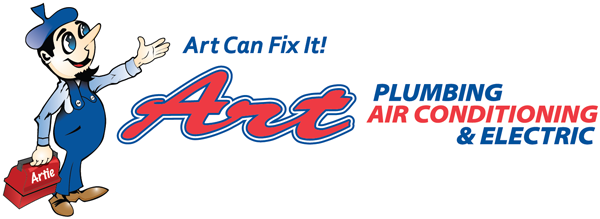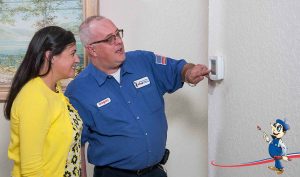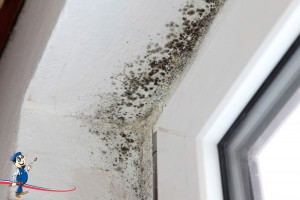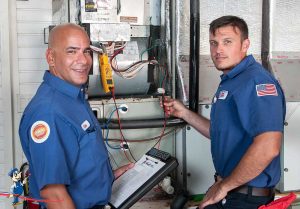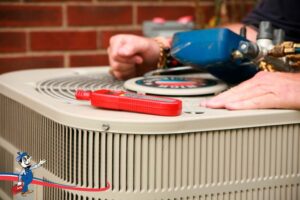How To Unclog An AC Drain Pipe
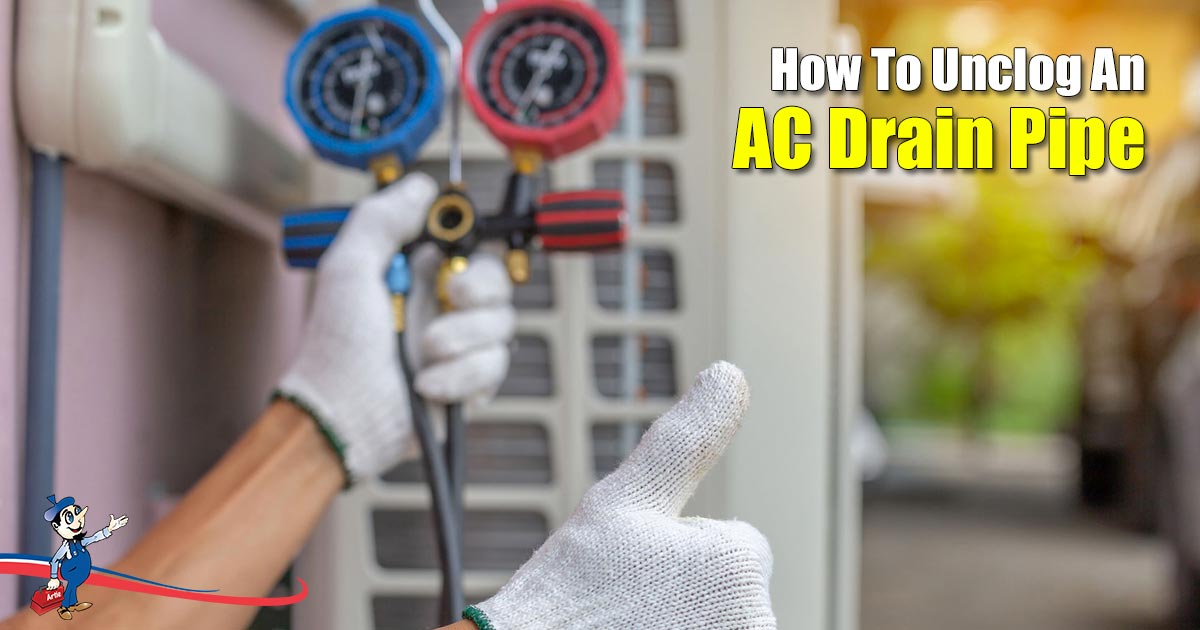
A clogged AC drain pipe can cause serious headaches for you as a homeowner, but it shouldn’t have to. Because your AC plays such an important role in your households’ daily comfort, you’ll want to address a clogged AC pipe right away. The great news is, it is relatively straightforward to do, with some guidance from the experts at Art Plumbing AC & Electric. Staying on top of all the elements that keep your property going can be stressful and seem tedious at times but the best way to avoid a clogged condensate drain line is through regular care and preventative AC maintenance.
Signs Of A Clogged AC Drain Pipe
One of the most obvious signs of a clogged AC pipe is that your air-conditioning system has stopped working. Your AC drain line ensures that excess condensation is removed from your air-conditioner. When operating properly, you’ll probably notice a small trickle of water at the end of a PVC pipe outside your home somewhere, which is where the moisture travels. This is where problems occur and may lead to a backlog of water and/or a blockage. Other signs of a clogged AC drain pipe include:
- Water flooding around the air handler unit.
- If your AC is not cooling or running at all due to a clogged AC pipe, the water safety switch would have been triggered preventing it from operating. There could be water around your safety switch which would have triggered it to cease functionality.
- A moldy smell throughout the house. This could be as a result of a build-up somewhere inside the system. Your AC is still running but doesn’t smell good. Mold has been known to cause health issues so be sure to act on this right away if it is the case.
- If your condensate pan is full more often than not, you could be dealing with a potential clog. In order to prevent mold from growing, act on this as soon as possible.
- If you notice water damage around your AC unit, near the fan or on the floor, this could be a sign of a blockage somewhere along your drain line.
Why Is My AC Pipe Clogged?
An AC pipe usually develops a clog due to algae. Because of warm air that blows over the cold evaporator coil of the HVAC, the drain pipe can get pretty humid; and along with the condensate traveling through the pipe, these conditions are perfect for algae to thrive. If your AC is constantly running (which in most South Florida homes it does), it is more likely to clog up more often than not. Mildew, mold and other types of bacteria and fungi have been known to cause issues for your AC.
Unclogging Your AC Pipe
Regular, smaller clogs will be relatively easy for you to fix. We suggest steering clear of using bleach to unblock your drain as the chemicals may cause more damage to the essential elements of your AC system. The following steps will assist you in getting rid of any mold, algae or mildew that has built up and possibly causing a clog.
Step 1: Turn Off The Power To Your AC
Turn the power off at the thermostat and at the breaker.
Step 2: Find Your AC Drain Line
This is a PVC pipe that is usually situated outside, near your condenser unit. You might require a bucket at this point should your drain line be full.
Step 3: Identify The Point Of Access On The Drain Line
This will most likely be a T-shaped vent with a cap covering the top of the drain. You can inspect for a blockage by removing this cap.
Step 4: Assess The Clog
Have a look at the AC drain pipe and see if the blockage is visible. If you can see what is blocking the pipe and can remove it manually, do so by wearing protective gloves. If the clog is too far down, move on to step 5, below. IMPORTANT TIP: Make sure you don’t push the blockage further down.
Step 5: Flush With Vinegar Solution
Vinegar has cleaning properties due to its acidity. If the smell of vinegar is too strong, you can mix it with some soap and warm water. Throw a quarter cup of regular, white, distilled vinegar into your drain line through the opening where you have removed the cap. Once it is full, you can stop.
Step 6: Leave The Solution For 30 Minutes
After 30 minutes, flush the pipe out with water and ensure that the water is flowing as it should do. If it does not flow normally, the clog is too big for a DIY remedy and will need to be addressed by a professional, offering air-conditioning services.
Step 7: Repeat Every Month
Repeat steps 1-5 every month to ensure that you stay on top of any build-up and prevent running into issues with the usage of your AC.
We don’t suggest undertaking serious HVAC repairs on your own simply because of the risk of causing further damage, however, if you are sure you’re sitting with a clogged AC pipe, you shouldn’t have much trouble with this fix. If you still can’t seem to get your AC running optimally, get in contact with our HVAC systems technicians to avoid further costly complications by calling 1-800-475-1504.
